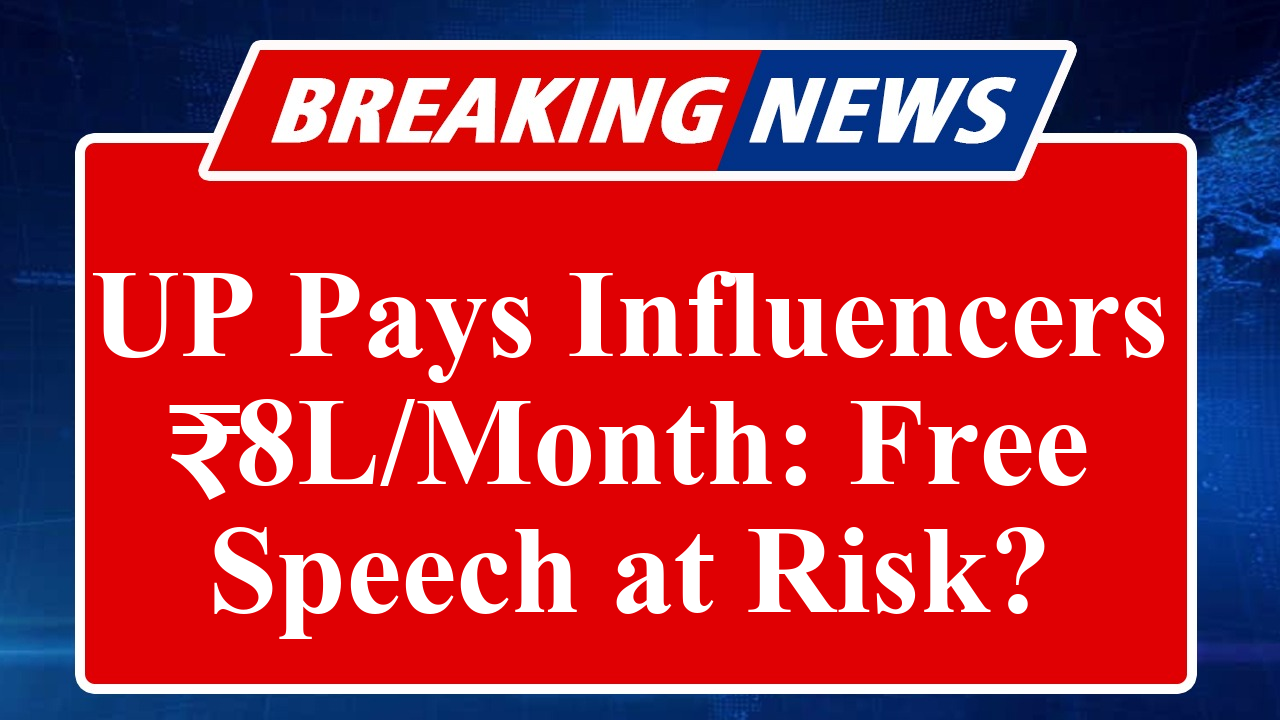Uttar Pradesh’s new digital media policy, offering up to ₹8 lakh monthly to influencers for promoting government schemes, has ignited controversy. While the BJP praises it as an innovative move to boost outreach and curb misinformation, opposition parties slam it as an attempt to stifle free speech and misuse public funds. The policy also includes strict penalties for objectionable content.
Uttar Pradesh’s Influencer Policy: A Bold Move or a Threat to Free Speech?
In a significant push to leverage the growing influence of social media, the Uttar Pradesh government, led by Chief Minister Yogi Adityanath, introduced a new digital media policy on August 28, 2024, aimed at engaging influencers to promote state schemes and achievements. The policy offers substantial financial incentives, with monthly payouts of up to ₹8 lakh for influencers on platforms like YouTube, Instagram, Facebook, and X, depending on their follower and subscriber base. For instance, YouTube creators with a large following can earn up to ₹8 lakh for videos, ₹7 lakh for shorts, and ₹4 lakh for podcasts, while influencers on X, Instagram, and Facebook can receive between ₹2 lakh and ₹5 lakh monthly.
The policy categorizes influencers based on their audience size, with payments scaled accordingly. This structured framework, as outlined by Principal Secretary Sanjay Prasad, seeks to amplify government initiatives, welfare schemes, and disaster response measures through transparent partnerships with digital creators. A senior official from the Director General of Information and Public Relations (DGIPR) emphasized that the policy aims to target specific demographics, empowering influencers to enhance outreach in an era where digital communication dominates public discourse.
However, the policy has stirred sharp criticism from opposition parties, including the Samajwadi Party and Congress, who view it as an attempt to control social media narratives and suppress dissent. Santosh Singh, who runs the digital platform Times of Swaraj, argued that the government is using financial incentives to create a favorable environment for itself, effectively turning influencers into “cheerleaders” for the state. Critics like Congress spokesperson Supriya Shrinate have labeled the policy a “legalized bribe” funded by taxpayers’ money, questioning its transparency and potential to curb freedom of expression. The opposition alleges that the government could misuse the policy’s strict penalties—legal action against content deemed anti-national, obscene, or derogatory—to silence independent voices.
The Bharatiya Janata Party (BJP) has defended the policy, with spokesperson Rakesh Tripathi calling it an innovative step to create employment opportunities and counter misinformation on social media. Tripathi claimed that the policy would set a precedent for other states, highlighting its potential to curb rumors that disrupt law and order. The government has also clarified that legal action will be taken against agencies or influencers uploading objectionable content, ensuring accountability in the digital space.
The policy’s financial incentives have drawn parallels to similar initiatives elsewhere. For instance, posts on X have pointed out that Punjab’s Influencer Empowerment Policy 2023, introduced under the Aam Aadmi Party, also offered up to ₹8 lakh for influencers with over a million subscribers, suggesting that UP’s policy is not entirely unprecedented. However, the scale of UP’s initiative, combined with its strict content regulations, has intensified the debate over its implications.
The influencer marketing industry in India, projected to reach ₹3,375 crore by 2026 with an 18% CAGR, is a dynamic landscape driven by platforms like Instagram and YouTube, which dominate with 98% and 94% brand usage, respectively. The UP policy taps into this trend, leveraging influencers’ ability to connect authentically with audiences, particularly in non-metropolitan areas where 65% of social media users reside. Yet, the policy’s focus on rewarding pro-government content has raised concerns about its impact on the independence of India’s vibrant creator economy, which includes nearly 5 million influencers.
As the policy rolls out, its success will hinge on balancing transparency, accountability, and freedom of expression. While the government aims to harness the power of influencers to amplify its initiatives, the opposition’s concerns about potential censorship and misuse of public funds cannot be ignored. The debate underscores the growing role of influencers in shaping public discourse and the challenges of integrating them into official communication strategies without compromising democratic values.
Disclaimer: This article is based on recent news reports, official statements, and posts found on X. Information is sourced from credible outlets like The Hindu, Times of India, and industry reports by EY and WPP Media. The views expressed in X posts are not conclusive and reflect public sentiment rather than verified facts. Readers are advised to cross-check information with primary sources for accuracy.

